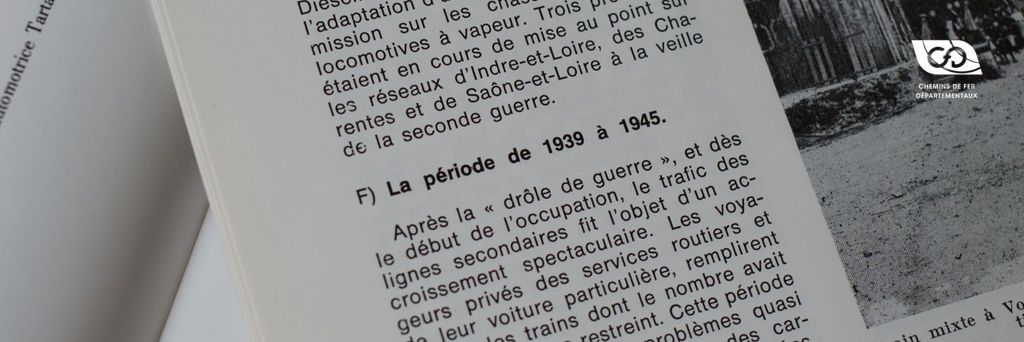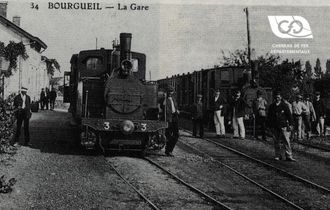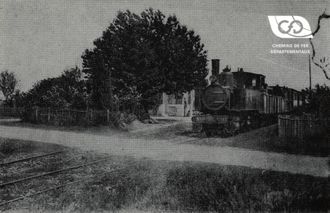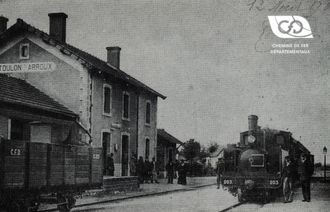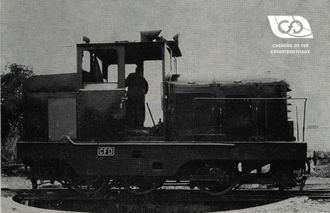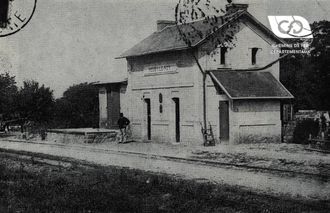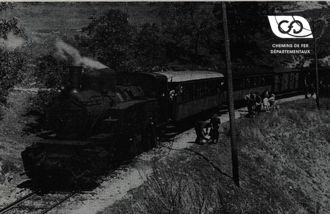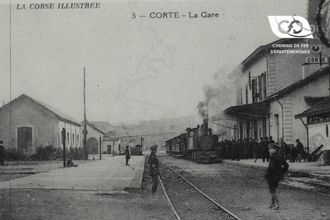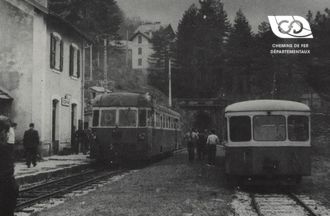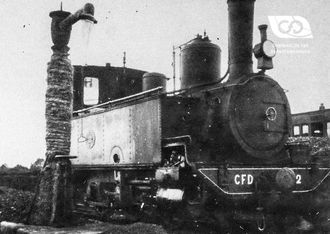After having faced the First World War, the C.F.D. company was at its peak and was at a sustained level of activity, with a period of upsurge during the Second World War.
A need for trains during the period from 1939 to 1945
After the "phoney war", and from the beginning of the occupation, the traffic on the secondary lines increased dramatically. Travellers without road services and private cars soon filled the trains, which had to be limited in number. This period presented the C.F.D. with almost insurmountable problems: fuel shortages, lack of spare parts, poor quality coal, etc., and the need for a new railroad. Some railcars had to be fitted with engines adapted to wood gas (a gasifier) in order to keep running. Crowded trains often had to be towed in double traction. Then came the lot of machine-gunning, bombing and sabotage. In spite of all these difficulties, the railway workers worked miracles to ensure maximum traffic flow, with as much regularity as possible.
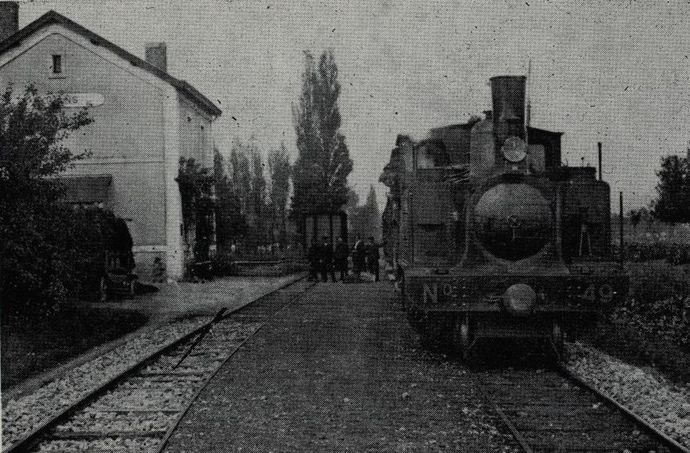
The reopening of lines to provide for the needs
Some lines, pending closure (Yonne, Vendée, part of the Dordogne) or whose dismantling had begun (La Ferté-sous-Jouarre in Montmirail) were reactivated for the occasion.
After the end of hostilities, these services were suspended. A black spot in spite of everything, the Corsican network, deprived of connections with the General Directorate, had been left to itself since the beginning of the war. The leasing having come to an end, it was not renewed, and the Company lost one of its best networks. The Corsican lines were then operated by the Ponts et Chaussées department.
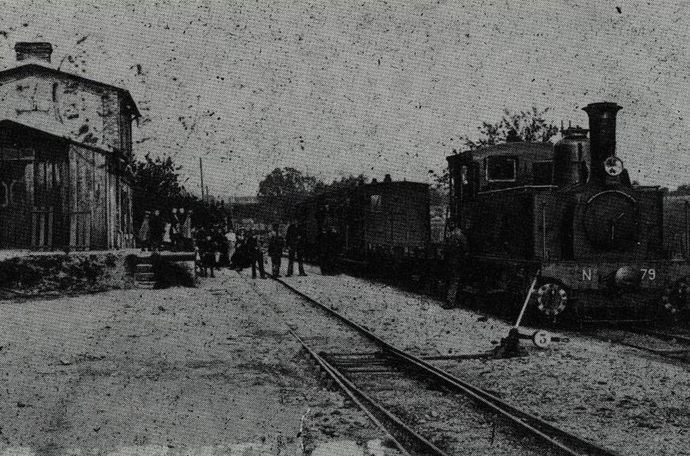
The decline of railway operations
In spite of a meritorious modernisation effort through the use of locotractors whose construction had been resumed after the war (seventeen machines had been manufactured by the different workshops of the networks), the situation worsened month by month. The resurrected and again aggressive road services began to skim rail traffic again. Not subject to the same obligations as the railways, it was possible for them to charge competitive rates : In addition, door-to-door, eliminating load breaks and connections, buses and trucks took almost all the traffic off the railways.
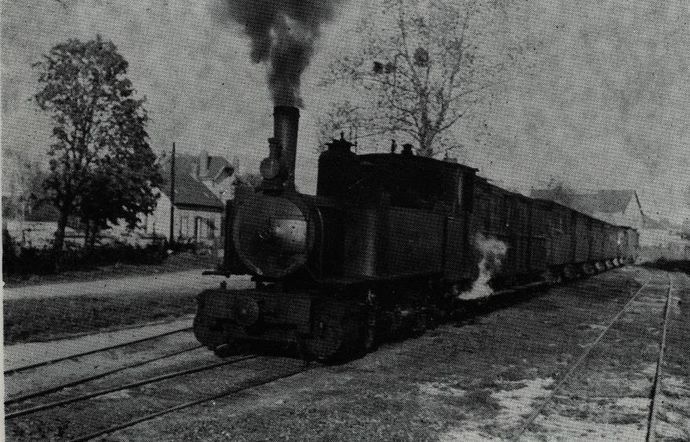
The removal of many networks
From 1946 to 1950, the networks of the Vendée, Dordogne, Indre-et- Loire, Yonne and Charentes were suppressed, reducing to 400 km the C.F.D. lines representing the networks of Vivarais, Lozère and the lines from Montereau to Château-Landon (Seine-et-Marne) and from Digoin to Étang (Saône-et-Loire).
The year 1950 saw the taking into account of the leasing of the Richelieu line and the treaty of borrowing the S.N.C.F. road to Tours. It was the last start.
The Company had tried to maintain certain relations by providing road services, but only the Dordogne network remained faithful to this mode of transport.
Finally it was the closure of Digoin-Étang in 1953, Montereau-Château-Landon in 1959, Lozère and Vivarais in 1968, the Richelieu line being abandoned in 1971. Only the Avalonnais line is still operated today with the leasing system.
source : MTVS 1981-3




